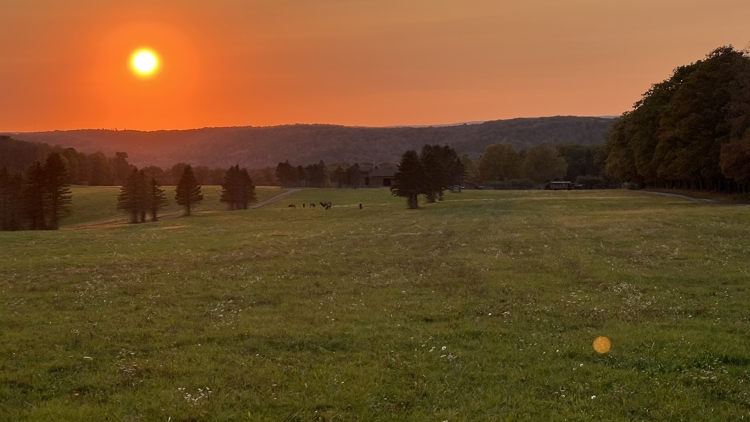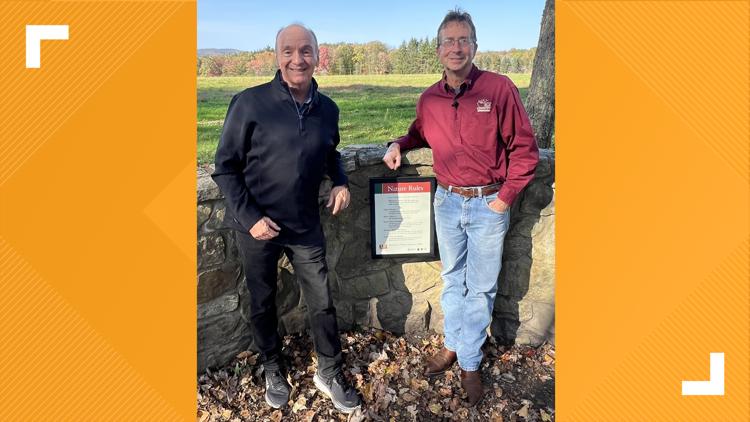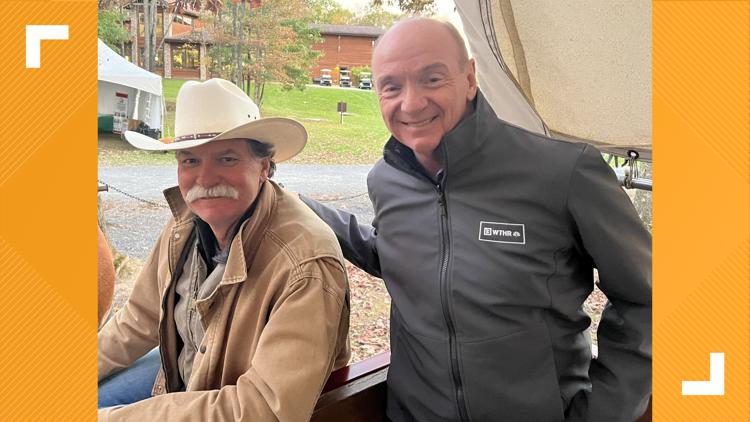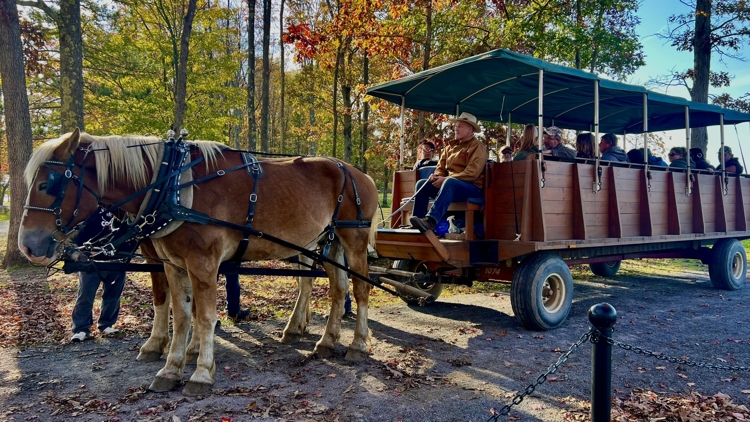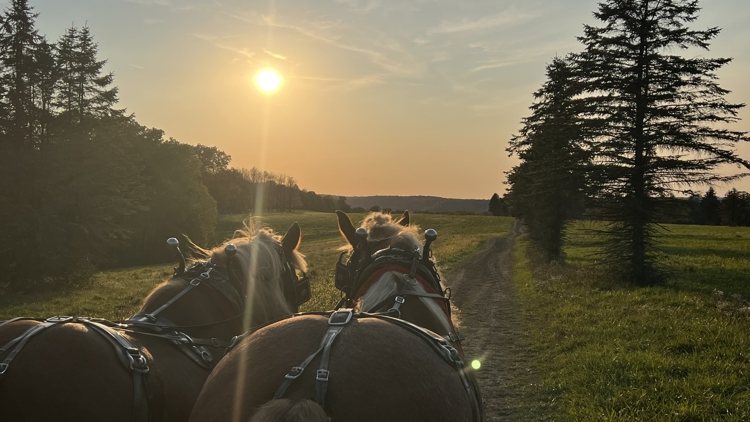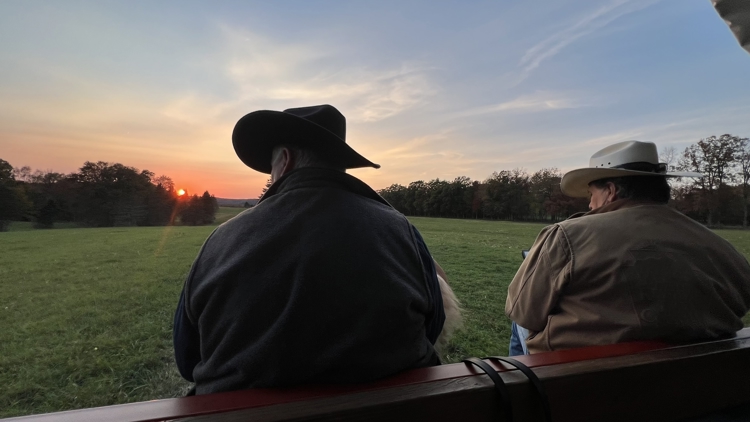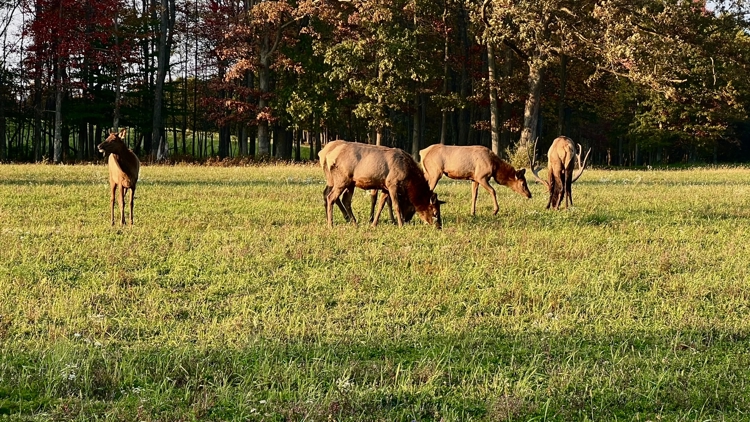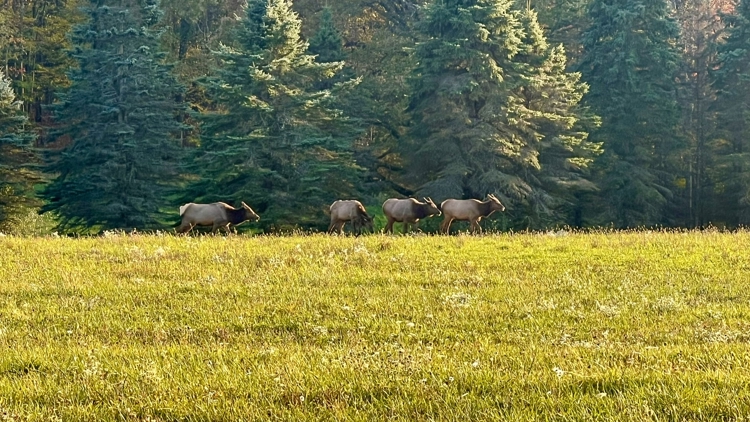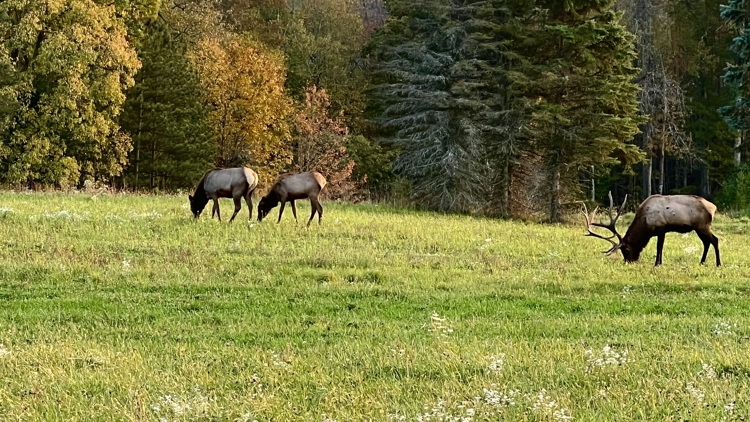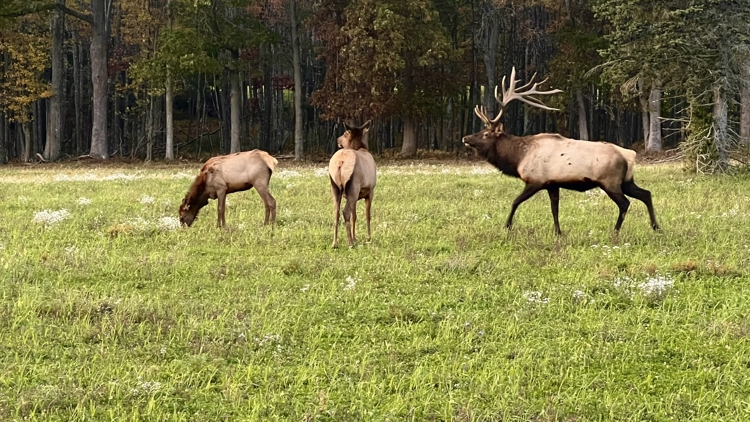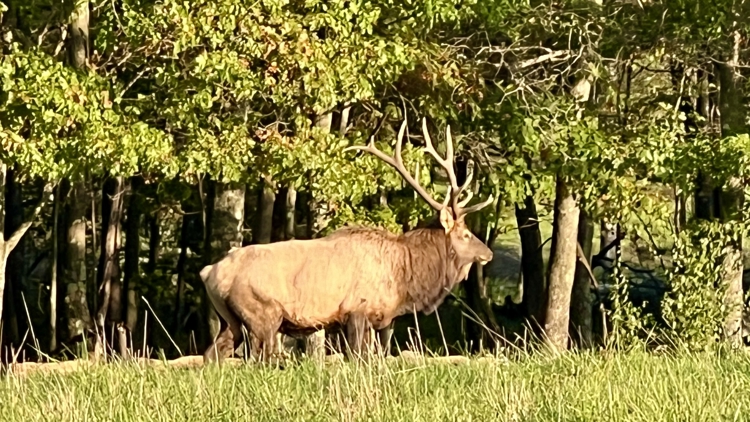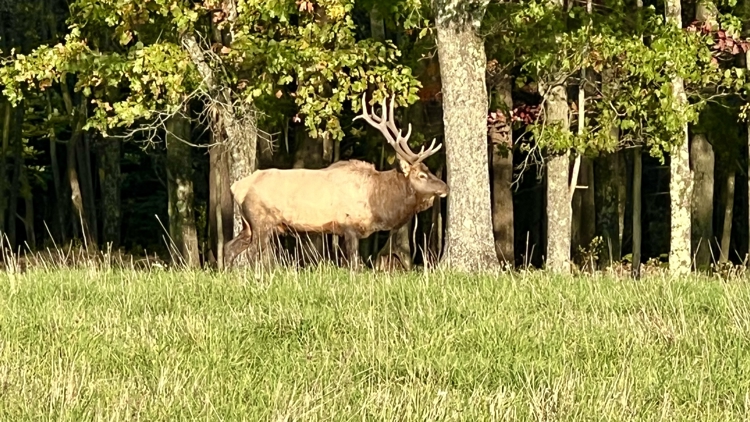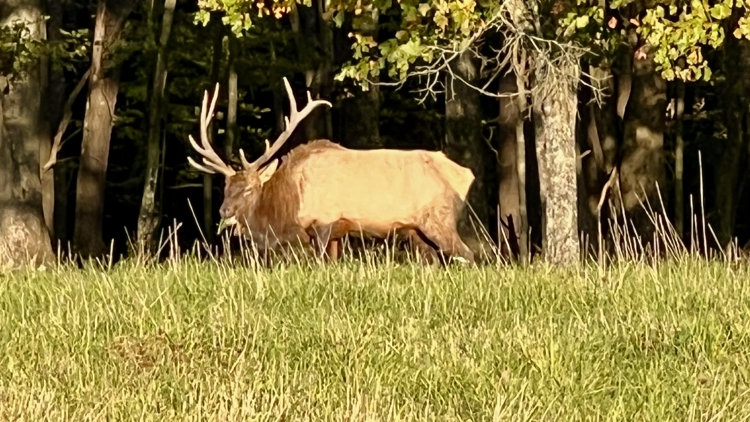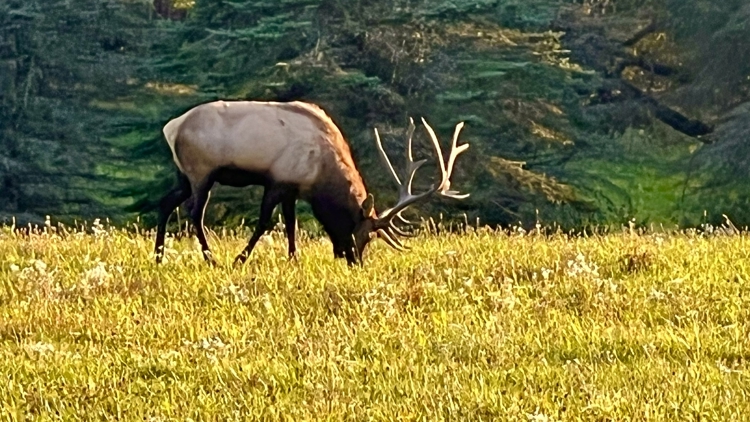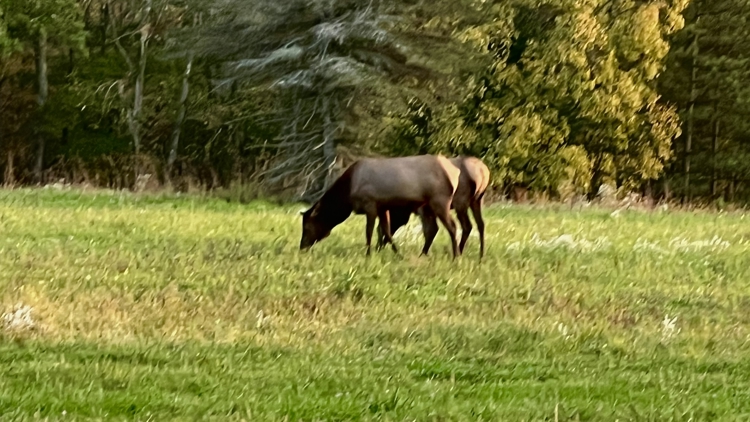BENEZETTE, Pa. — Drive through the winding roads of northern Pennsylvania, up and down the rolling hills where trees are plentiful, and people are scarce. Go past the streams and barns and farms of the Pennsylvania Wilds and you will finally get there. Elk Country is not easy to get to, but it is worth the effort.
Elk Country is home to one of the largest elk herds in the northeastern United States. Jeff Gauger is the executive director of this place, which draws just under a half-million visitors per year.
“It was originally a working farm, and then back in the 1960s and 70s, it became a Christmas tree farm,” Gauger said. “It was a Christmas tree farm up until the mid-2000s when we purchased it to build this visitor’s center.”

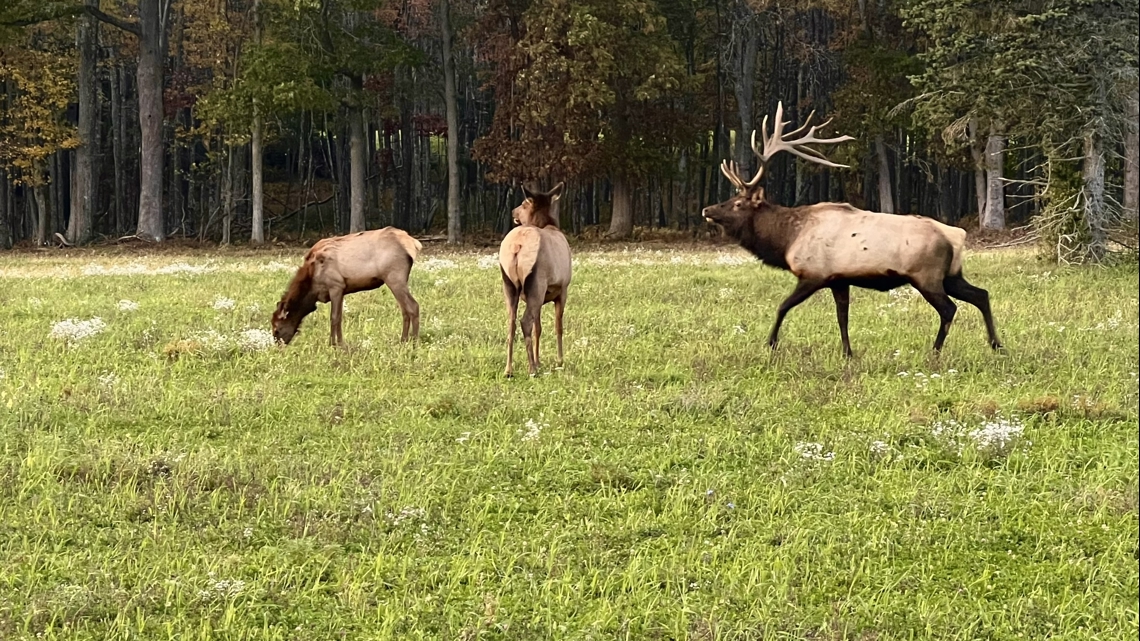
Why here, why Pennsylvania?
"It's all about the beautiful mountains, the clean air, the clean water,” Gauger said. “And just a great place for them. Not a lot of people live here. So, there isn't a lot of human interaction other than here at the visitor center, which has been created so that people can enjoy the elk here in Pennsylvania.”
Because of this place, the herd has grown and has gone from just a few to many more. It did take time, though.
"The herds started out as 150. The elk were put in different places in Pennsylvania, and this was really the only area where they stayed,” Gauger said. “After about 30 years, the elk population was down to 30 again, and that was due to a hunting season that was reintroduced about 10 years after the elk were brought into the area. At that time, only 30 animals remained, and they stopped the hunt. And gradually, the population grew again.”
Chuck's Big Adventure in Pennsylvania: Elk Country
Today, Gauger said they’re between 1,300 to 1,500 animals across a 10-county area in Pennsylvania.
The herd was firmly established, and the visitor center was open. Despite the distance, people came.
“You do have to want to come here,” Gauger said. “We're about 40 minutes off of Interstate 80. That's the biggest highway in the area. Most of our most of the people that come here are from the Pittsburgh area, the Harrisburg area, the Philadelphia area, but we've gotten visitors here from all 50 states and between 15 and 20 countries."
Guests can tour the 8,900 square-foot center, buy gifts, learn the history of the breed and even experience a 4D film that explores the uniqueness of elk in Pennsylvania. Many of the curious will board a wagon with 18 other elk fans and get up close and personal to part of the herd in nearby fields.

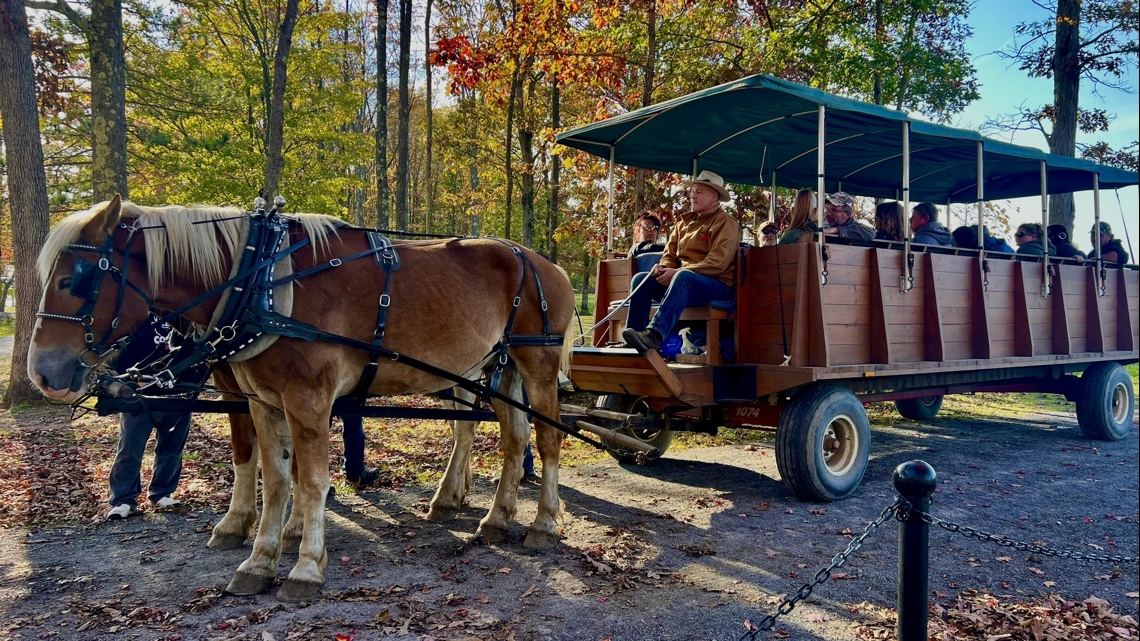
Why do people find such a fascination with these animals? Gauger said it is very simple.
"They're just a beautiful animal,” Gauger said. “They're docile. They're just beautiful. I've seen thousands of them, and I still stop and look at an elk when I have the opportunity, which is just about every day.”
Rawley Cogan is an elk biologist and the retired executive director of the facility. He said the state’s commitment has made the elk herd sustainable for years to come.
"We're really, really fortunate in Pennsylvania to have the amount of public land we have,” Cogan said. “If you look at state game land, about 1.5, almost 1.6 million acres, state forest land 2.2, 2.3 million acres. Add on the Allegheny National Forest, about a half a million acres. We've got an area here in Pennsylvania, Elk Range, the size of Yellowstone National Park that's made up of public land.”

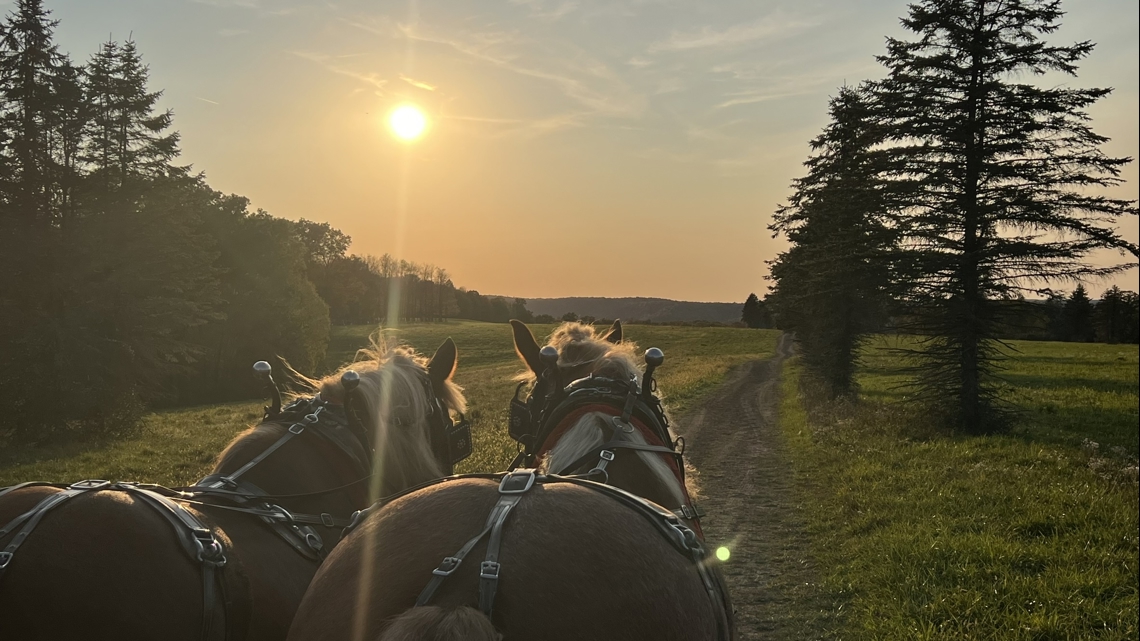
Cogan said when he began studying elk 42 years ago, there were less than 100 elk in the state.
“If it were not for public land, I don't believe we'd have an elk in our state today,” Cogan said. “Because (this is) the place where l can see elk without influence of man. They're not competing for the same habitat, not competing with highways, railroads, crop fields, all those things because of public land."
Without question, this is the one place in North America where generations will be able to not only learn about this breed, but see them up close.
To view these majestic animals interacting with each other, thriving and expanding in numbers is something that would have been unthinkable 100 years ago, but now, this place is inspiring others to fight for the existence of this beautiful animal.



